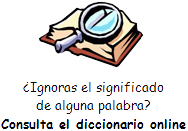Tips to Address Cyberbullying
Cyberbullying is the use of electronic communication to threaten or
insult someone. Concern over cyberbullying has been at the center of
recent criticism directed at social media companies.
Last month, Facebook delayed the development of its child version of
Instagram after opposition from American lawmakers and safety advocacy
organizations.
More than 40 state attorneys general wrote a letter to Facebook founder
Mark Zuckerberg urging him to stop the release of the project. Social
media can be “detrimental to the health and well-being of children,” and
kids’ Instagram could make cyberbullying worse, the letter said.
Facebook’s own data showed that Instagram can be harmful to teens’
mental health, especially girls. The information was first reported by
The Wall Street Journal last September.
Cyberbullying also appears to be worse among girls, says a 2019 survey
by the National Center for Education Statistics. While 20.4 percent of
students bullied online were girls, 10.9 percent were boys. Of the 22
percent of all kids ages 12 to 18 that were bullied during the school
year, 16 percent of students said they were bullied electronically.
A study by the organization Common Sense Media in 2019 found that
teenagers use an average of 7 hours, 22 minutes of entertainment media a
day. And that does not include time using media for school. Pew Research
said the amount of time that children spent online also increased during
the pandemic.
With more time online comes a higher risk of exposure to cyberbullying.
Cyberbullying can make feelings of depression worse and negatively
impact mental health. Common Sense found that 38 percent of teens and
young adults were depressed in 2020, up from 25 percent two years before.
Higher levels of depression also were connected to higher levels of
social media use.
Almost all young people use some form of social media but may not know
the risks they face online.
October is National Bullying Prevention Awareness Month. Using free
resources from StopBullying.gov and Common Sense Education, here are
ways adults can help children deal with cyberbullying:
Know the warning signs of cyberbullying
A child can be involved in cyberbullying in different ways. They can
bully, be bullied, or witness the bullying of others. The more digital
forms of communication a child uses, the more exposure he or she may get
to cyberbullying. Parents, teachers and other adults need to be aware of
children’s online usage.
Some warning signs that a child may be involved in cyberbullying are:
- Spending much more or less time on electronic devices, including
texting
- Hiding their screen when others are near, and avoiding discussion
about what they are doing on their device
- Closing social media accounts and opening new ones
- Avoiding social situations, even ones that were enjoyed in the past
- Becoming depressed, or losing interest in people and activities
How to address cyberbullying
Cyberbullying is like other forms of bullying and should be handled in a
similar way. If a child is being cyberbullied, adults should support the
child being bullied and address the behavior of the child doing the
bullying. Adults should show children that cyberbullying is something
serious that should be stopped.
If a child sees hateful content online, there are a few easy ways they
can deal with it. The child could report the content anonymously, as
hateful speech violates most websites’ terms of service. They can also
block the person from posting abusive content. While ignoring posts
might seem easier than blocking someone, it will not make the problem go
away.
Adults can try to make their kids feel more empathy towards others and
consider how other people feel. They should see whether more help is
needed for those involved, like speaking to a guidance counselor or
mental health professional.
Cyberbullying may be impossible to stop completely, but parents could
watch their child’s behavior and internet time.
France has taken stronger measures against cyberbullying. In January,
the country created a special court to try online crimes, including
harassment and bullying. Eleven people were convicted this summer of
using the internet to harass a teenage girl, including sending her death
threats. |
![]() ).
Utiliza el botón derecho del ratón y "guardar enlace" para descargar el
fichero a tu PC, tablet, Smartphone, etc.
).
Utiliza el botón derecho del ratón y "guardar enlace" para descargar el
fichero a tu PC, tablet, Smartphone, etc.![]() Escucha el audio
Escucha el audio



